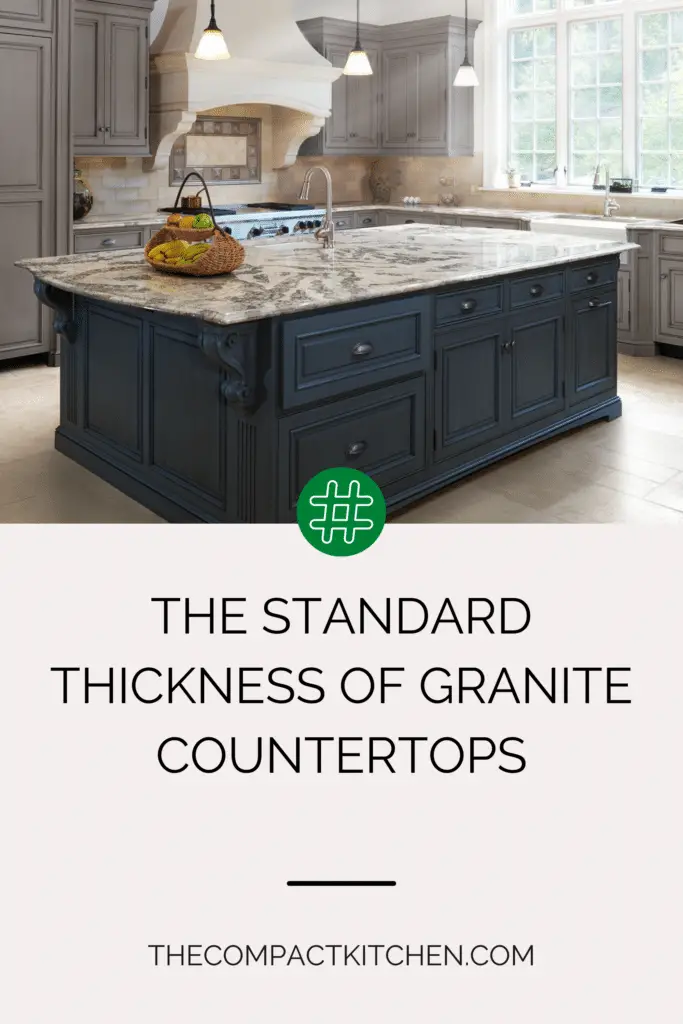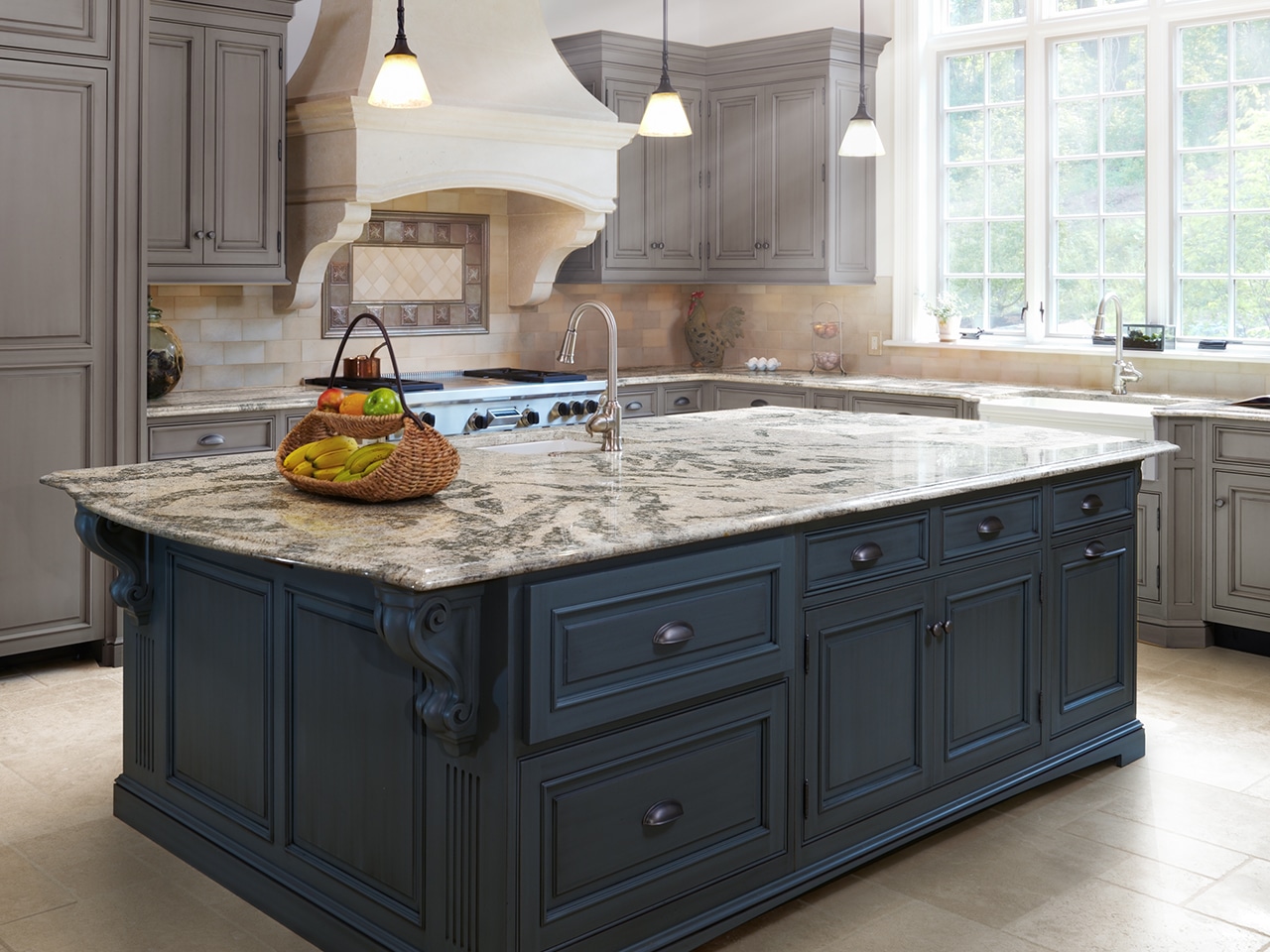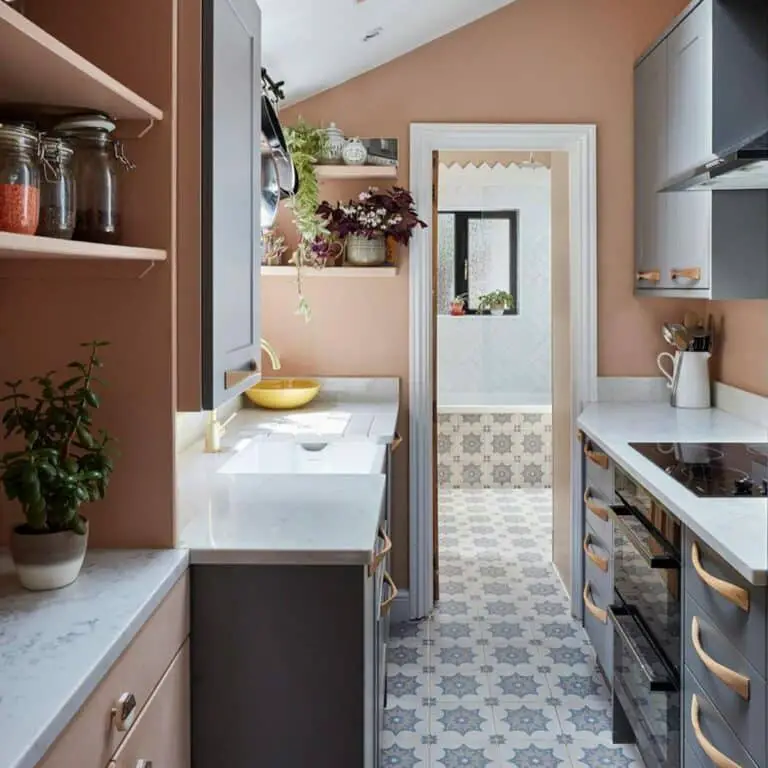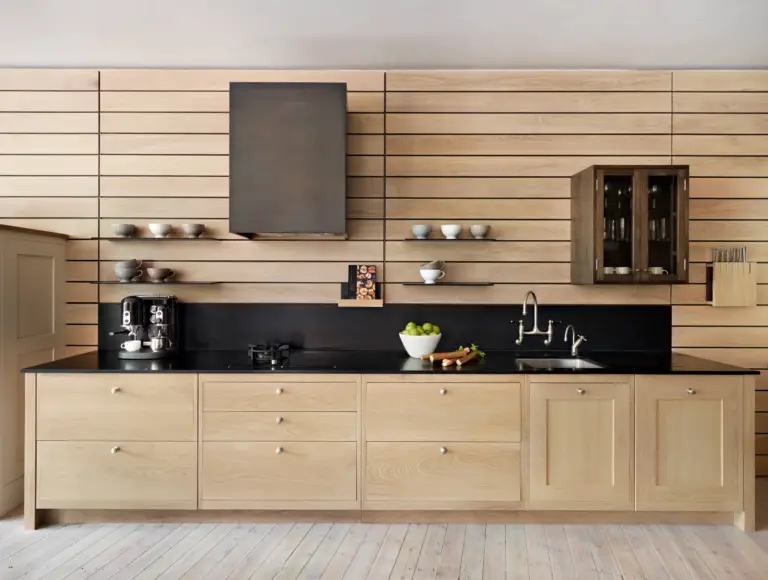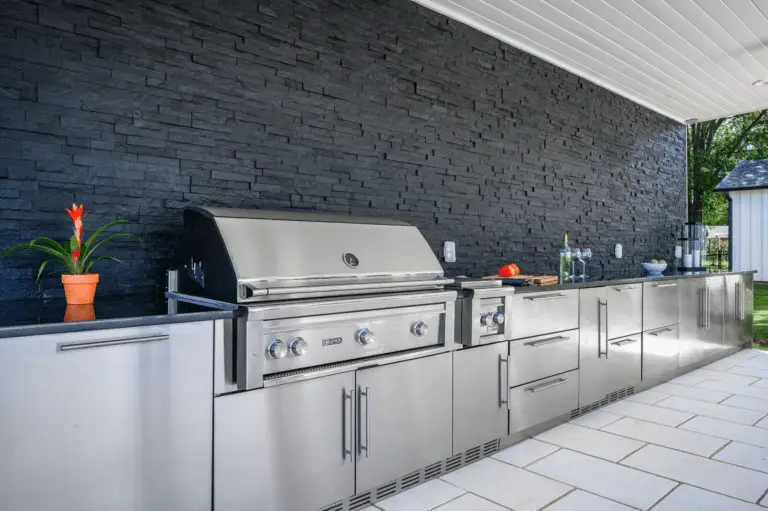Common kitchen granite countertops are typically 2cm or 3cm thick. Which one to choose depends on several factors, including your aesthetic preference, desired durability, and budget. The thickness of the granite countertop not only contributes to the visual appeal of your kitchen but also plays a vital role in the countertop’s functionality and longevity.
In this guide, we will explore the importance of selecting the appropriate thickness for your granite kitchen countertop, providing you with the essential knowledge to make a decision that best fits your design vision and practical needs.
Why Thickness Matters
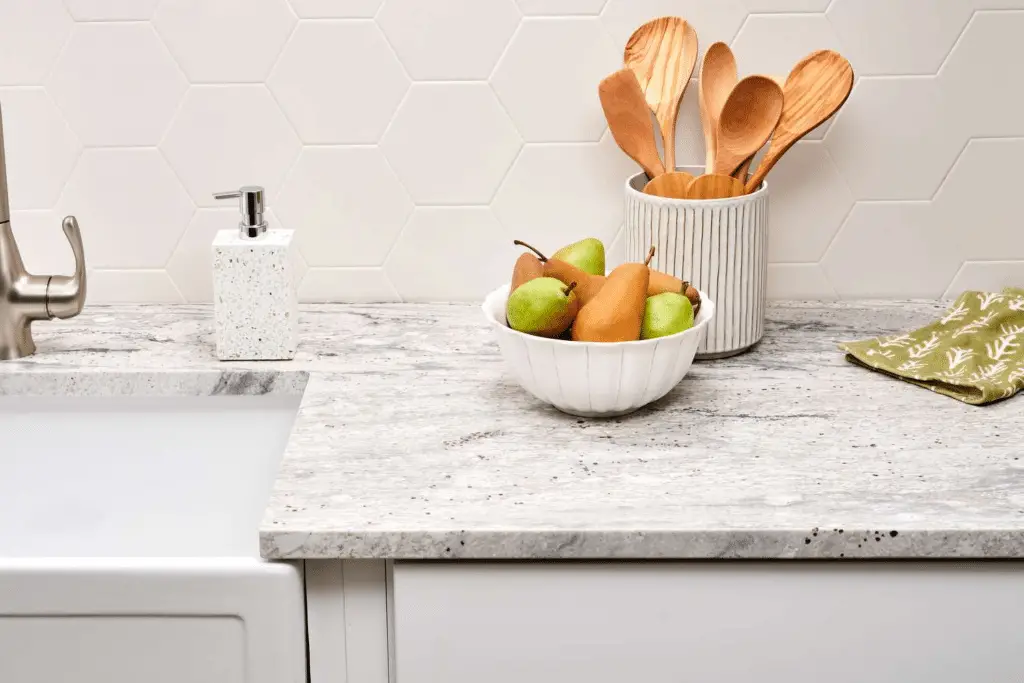
Aesthetic Appeal
The thickness of granite countertops significantly influences the aesthetic dynamics of your kitchen. For instance, a thicker countertop often exudes a sense of luxury and solidity, making it a focal point in the space. Thinner countertops, while sleek and modern, might not offer the same visual impact but provide a streamlined and minimalist look that appeals to many homeowners.
Strength and Durability
Thickness directly correlates with the strength and durability of the granite countertop. A thicker slab, being more substantial, is less likely to crack or break than its thinner counterpart. For kitchens, where countertops see heavy use and wear, opting for a thicker granite can be a wise investment in the long term, providing resilience against impacts and weight.
Cost Implications
The cost of granite countertops varies with thickness. Thicker slabs require more material and are typically more expensive. However, while thinner countertops might be lighter on the wallet initially, they may require additional support structures or careful installation to prevent damage, potentially increasing the overall cost.
Installation Considerations
Thicker granite countertops are heavier, demanding more robust support structures and careful handling during installation. In contrast, while thinner countertops are easier to handle, they might need additional reinforcement to enhance their strength, impacting the installation process and considerations.
Trend Compliance
With trends in kitchen design leaning towards thicker, more substantial countertops, opting for a thicker granite slab ensures your kitchen stays modern and trendy. However, it’s crucial to balance trend compliance with personal preferences and the practical needs of your space.
Industry Standard Thickness of Granite Countertops
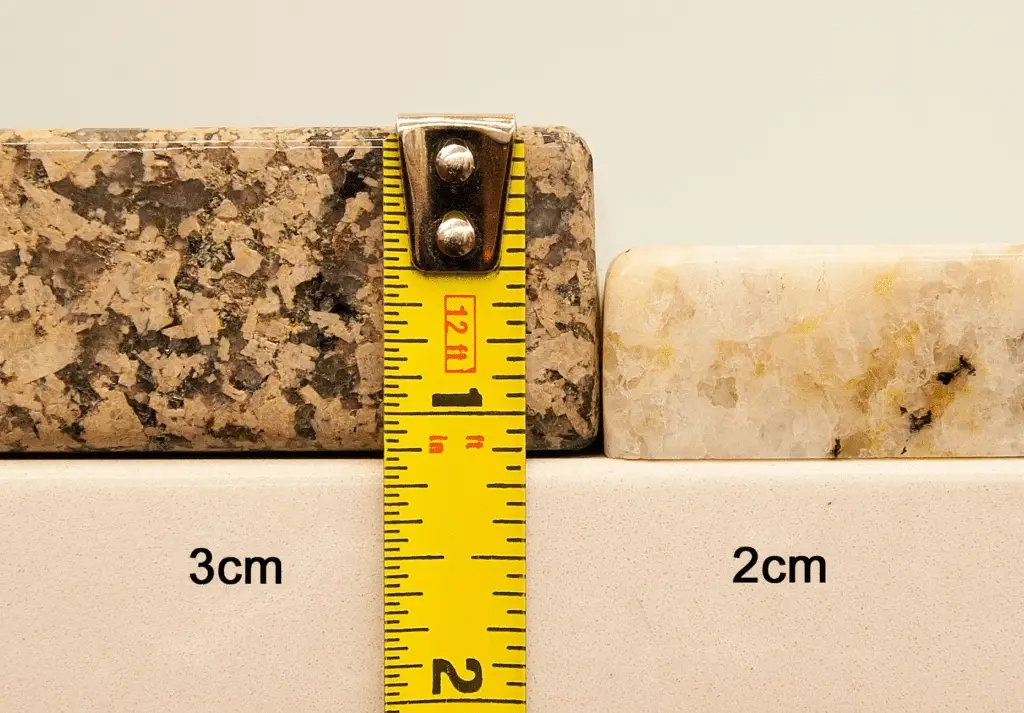
Common Options for Countertop Thickness
Granite countertops primarily come in two standard thicknesses: 2cm (approximately 0.8 inches) and 3cm (approximately 1.2 inches). The 2cm thickness is a more traditional option, while the 3cm has gained popularity for its robust appearance and added durability.
2cm Countertops
- Overview: 2cm thick countertops are lighter and typically less expensive due to the use of less material. They are often used in bathroom designs but are also suitable for kitchens.
- Installation: These countertops may require plywood support during installation, as they are thinner and somewhat more vulnerable to breakage.
3cm Countertops
- Overview: countertops with 3 cm slab are a popular choice for kitchens due to their sturdier and more substantial appearance. They offer enhanced durability and do not usually require additional support.
- Installation: Being thicker and heavier, 3cm countertops often demand a robust support structure but do not necessarily need plywood backing, simplifying the installation process.
Choosing Between 2cm and 3cm
The choice between 2cm and 3cm thickness depends on your design preferences, budget, and the countertop’s intended use. While 2cm countertops might be more cost-effective, 3cm options provide added durability and a modern look that many homeowners prefer.
Other Thickness Options
While 2cm and 3cm are standard, other thickness options are also available for those seeking a unique or specific look. For instance, some prefabricated countertops might be as thin as 1cm, though these are often less durable and require more support.
Color and Thickness
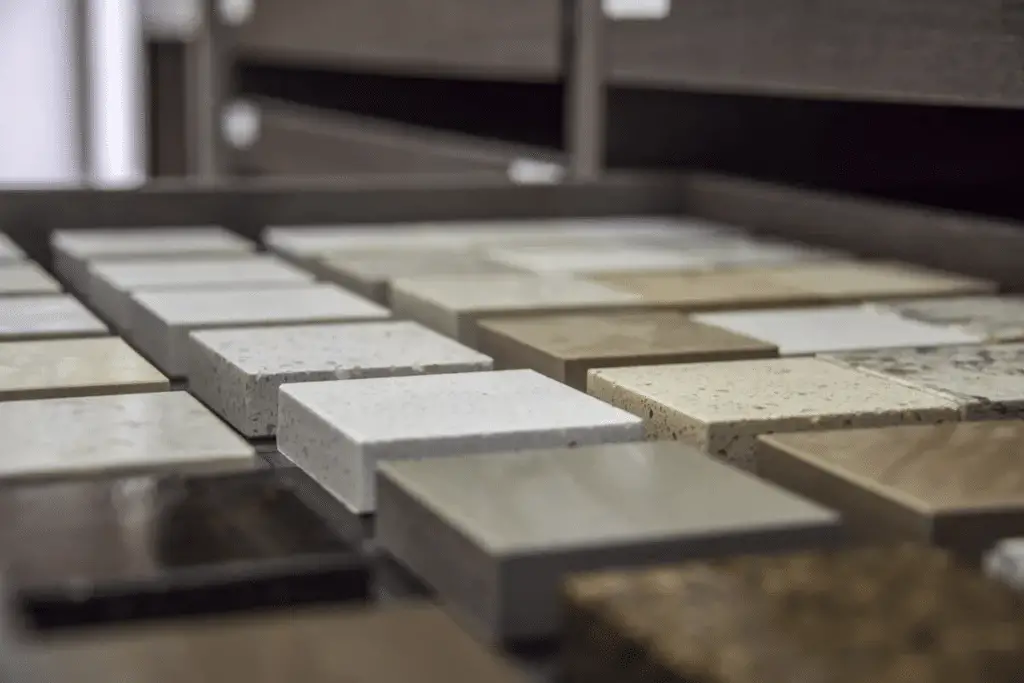
Availability Based on Color
The availability of granite thickness often varies with different colors. For instance, darker granite colors are typically available in thicker slabs. This variation is crucial to note, as it may limit your options if you have a specific color and thickness in mind for your countertop.
Design Coordination
Color and thickness coordination is vital for achieving a harmonious and aesthetically pleasing kitchen design. The thickness of the countertop can influence the perception of color and vice versa. For example:
- Darker Colors: Thicker, darker countertops can enhance the perception of luxury and solidity in your kitchen space.
- Lighter Colors: A thinner profile may be more suitable for lighter granite colors to maintain a sleek and modern appearance.
Making Informed Choices
When selecting the granite for your countertop, it’s essential to consider both color and thickness simultaneously. The two elements should complement each other to create a balanced and cohesive look in your kitchen. For instance, if you opt for a thicker countertop, consider how different colors will appear at that thickness and how they will coordinate with your overall kitchen design.
Trends in Granite Thickness
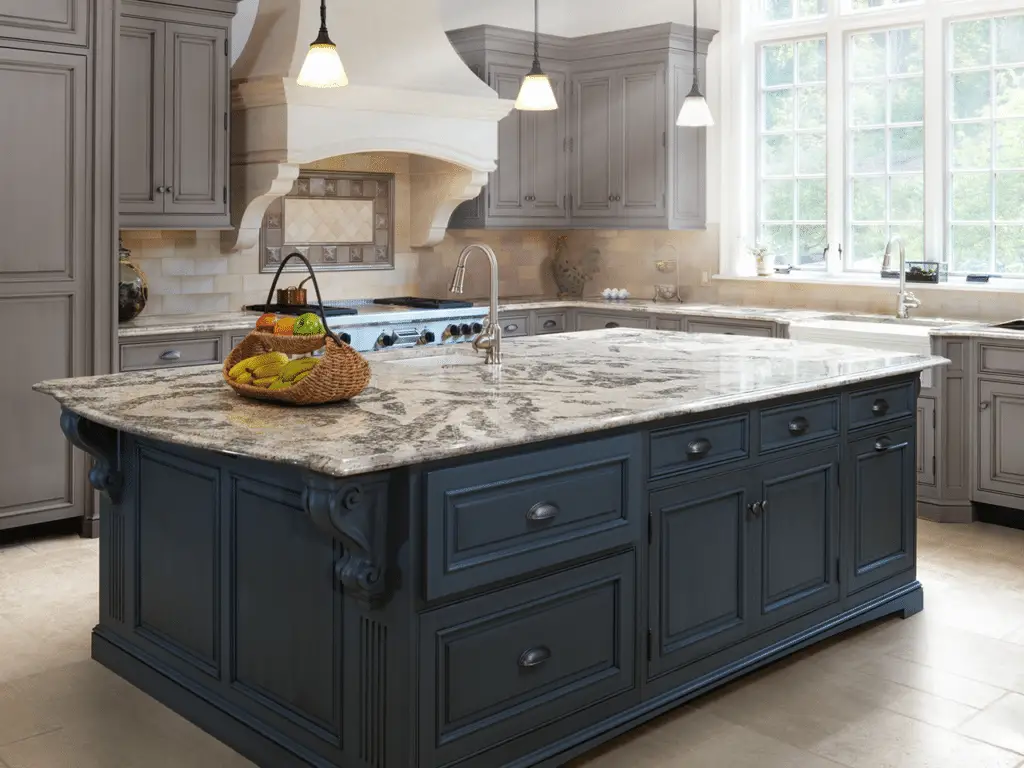
Current Trends
- Preference for Thickness: There has been a noticeable shift towards thicker granite countertops in recent years. The 3cm thickness has become increasingly popular among homeowners for its substantial, luxurious appearance and added durability.
- Custom Thickness: For those seeking a unique aesthetic, custom thickness options are becoming more prevalent. These are often chosen for special, high-end design projects to create a distinctive look.
Influence on Buyer’s Choice
- Aesthetic Appeal: The trend towards thicker countertops influences buyers who are looking for a modern, upscale look in their kitchens. Thicker slabs offer a sense of luxury and permanence that is highly sought after in contemporary kitchen designs.
- Durability Concerns: With kitchens being a central hub of activity, buyers are leaning towards thickness options that promise longevity and durability, making thicker granite countertops a favored choice.
- Value for Money: While thicker granite options might be pricier, many buyers see it as a valuable investment for the visual appeal and durability it adds to the kitchen, positively impacting the property’s overall value.
Making the Right Choice
Consider Your Design
- Visual Appeal: Your countertop’s thickness will significantly impact the overall aesthetic of your kitchen. For a sleek and modern look, you might opt for thinner countertops, while thicker ones provide a sense of luxury and solidity.
- Color Coordination: Since the availability of colors may vary with thickness, ensure the chosen thickness complements your desired color and the overall design scheme of your kitchen.
Evaluate Costs
- Initial Expenses: While thinner countertops might be more affordable initially, consider the potential need for additional support and the costs associated with it.
- Long-Term Investment: Thicker countertops, though pricier, offer greater durability and can be a wise investment in the long run, reducing the need for repairs or replacements.
Check Availability
- Color and Thickness Options: Availability of specific colors in desired thickness options should be checked. Some colors might not be available in both standard thicknesses, so it’s crucial to verify this beforehand.
- Custom Options: If you’re considering a non-standard thickness, understand that this might limit your color options and affect the cost and installation process.
Think Long-Term
- Durability: Opt for a thickness that ensures your countertop withstands the test of time and daily use, especially if the kitchen is a high-traffic area.
- Cost-Effectiveness: Consider the long-term value the countertop will add to your home, not just the upfront costs. A durable, thicker countertop might be more cost-effective over time.
Conclusion
Choosing the right granite countertop thickness is crucial for your kitchen’s aesthetics and functionality. The 2cm and 3cm options offer different benefits, with the trend favoring the latter for its luxurious and durable qualities. Your selection should consider color availability for each thickness, align with both current trends and your personal preferences, and fit within your budget.
Understanding both initial costs and long-term value is essential. While 2cm countertops may be more affordable, 3cm options often provide greater durability and a premium feel, offering better long-term value.
And guess what, there’s more beyond granite. You have Wood, Soapstone, Quartz… and a lot more countertop options, why not put them on the table?
Ultimately, your choice should balance cost considerations with your design vision and the specific needs of your kitchen, ensuring a harmonious and lasting result.
